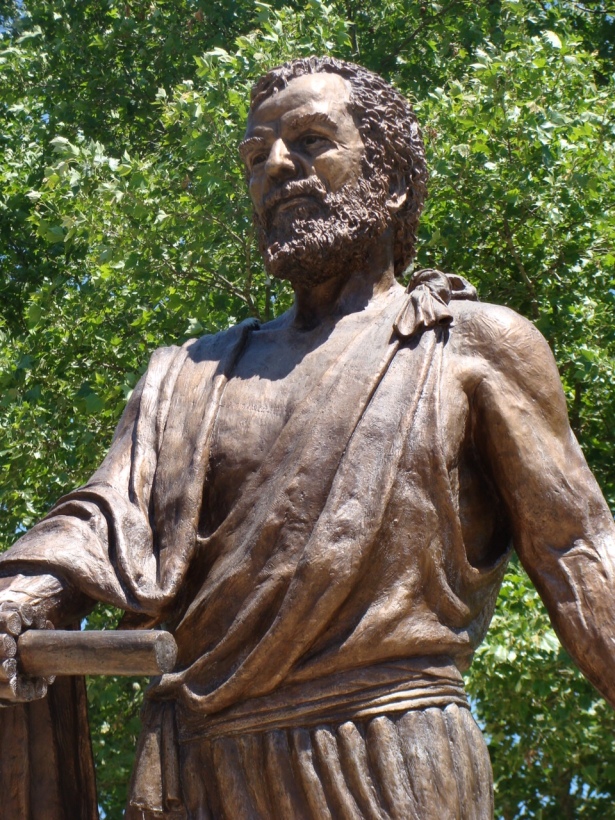 Our never-ending quest to bring you the strangest statuary, the most monumental monuments, and the most enticing effigies brings us to Interstate 15 outside of Escondido, California. This week we celebrate the birthday of Lawrence Welk, who was born March 11, 1903. This statue stands outside the Lawrence Welk Museum. Younger readers may not recognize the name, but for earlier generations of Americans, the name spawns a visceral reaction. Welk was an accordionist, bandleader, and host of The Lawrence Welk Show, which ran from 1951-82.
Our never-ending quest to bring you the strangest statuary, the most monumental monuments, and the most enticing effigies brings us to Interstate 15 outside of Escondido, California. This week we celebrate the birthday of Lawrence Welk, who was born March 11, 1903. This statue stands outside the Lawrence Welk Museum. Younger readers may not recognize the name, but for earlier generations of Americans, the name spawns a visceral reaction. Welk was an accordionist, bandleader, and host of The Lawrence Welk Show, which ran from 1951-82.
The format of Welk’s show was the same virtually every week. The show opened with Welk’s theme “Bubbles in the Wine” playing amid faux champagne bubbles floating through the ballroom. Welk would then introduce the night’s theme in a heavy German accent. The show consisted of several songs from the band and a number of skits as well. The show featured a variety of musical numbers from the big band era through the 60’s and 70’s, but is most associated with songs from the big band era of the 1940’s.
Welk was a shrewd businessman and knew what sold to mainstream American television audiences of the 1960’s and 70’s. His performers, which he dubbed his “musical family,” were held to an unofficial set of moral standards. Alice Lon was famously fired for crossing her legs on a desk in 1959. By and large, Welk gave America what it wanted, though. Letters from fans often dictated what performers were featured and what performers saw their solo opportunities diminish.
After his death in 1992, his music earned a reputation as unequivocally un-hip. While it is true that Welk’s “champagne music” style ostracized many contemporary jazz artists, as was the case when famed clarinetist Pete Fountain quit the band in the 1960’s. This all-or-nothing view of Welk, however, does a disservice to a band leader whose band stayed relevant for over 30 years. The Lawrence Welk Show launched the careers of several country acts of the 60’s and 70’s and was the first variety show to regularly feature an African-American when he hired dancer Arthur Duncan in 1964.
Welk’s band continues to perform in Branson, Missouri and the show continues to air in reruns on PBS stations throughout the United States, ensuring that, whichever way the musical wind blows, the bubbles will keep on popping.
